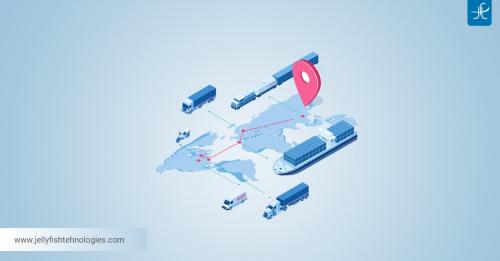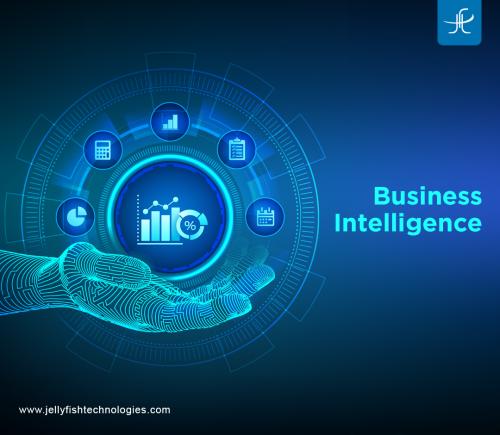Top 5 FinTech Software Development Trends for 2024

Fintech software development has emerged as a driving force, revolutionizing the ways financial services are delivered and accessed. From cutting-edge payment solutions to AI-powered wealth management tools, the fintech sector continues to exceed defined standards and conventions, paving the way to heavy fintech investment.
Coming up with unprecedented opportunities and capabilities, the fintech industry is experiencing a rapid digital transformation, taking center stage among all other industrial domains. Resultantly, fintech software development companies are floating on the top to deliver cutting-edge fast, reliable, and efficient banking and fintech solutions more securely.
The Current Hustle in the Fintech Industry
The current global fintech market revenue stands at $312.92 billion in 2024. With a CAGR of 14 %, the revenue is estimated to grow to $608.35 billion by 2029.
In 2022, the fintech industry held 5 percent of the global banking sector’s net revenue, accounting for approximately $150 billion to $205 billion. This figure is projected to increase to more than $400 billion by 2028, representing a 15 percent annual growth rate of fintech revenue between 2022 and 2028.
The largest fintech companies are located in the United States and China based on their market capitalization. The market capital revenue for Visa and Mastercard headquartered in the U.S. are respectively 520 and 396 billion US dollars. Intuit which delivers financial, accounting, and tax preparation software, ranks third globally, followed by Tencent, a Chinese company that ranks fourth with a market capitalization of 146 billion U.S. dollars.
Emerging Trends in Fintech in 2024
Let’s dive into the top b2b fintech trends that will rule 2024 and elevate the fintech solutions.
Embedded Finance
The Embedded Finance Market Size was valued at USD 58 billion in 2022. Due to the rapid surge in digital payments, the value is estimated to reach 730.05 billion in 2032, rising at the CAGR of 29% for the forecast period of 2023 to 2032.
Embedded finance refers to the integration of financial services into non-financial platforms, such as e-commerce websites, social media platforms, or mobile apps. A fintech software development company embeds financial services into non-financial platforms that allow a seamless and convenient customer experience. For example, customers can make payments, access loans, or manage investments with the application they are currently using, leading to higher user engagement, and a wider audience reach including underserved or unbanked populations.
Top fintech software development companies can leverage this data gained from customer behavior, preferences, and financial needs and tailor personalized services, improve risk assessment, and create targeted marketing campaigns, leading to more efficient operations and better customer outcomes.
Positive impacts of Embedded Finance:
Improved Customer Experience
Increased Access to Financial Services
Cost Efficiency
Partnership Opportunities
Data-Driven Insights
Banking as a Service (BaaS)
The global banking-as-a-service market was valued at $4 billion in 2022 and is projected to reach $22.6 billion by 2032, growing at a CAGR of 19.3% from 2023 to 2032.
Banking as a service is a modern and end-to-end process that allows banks to execute all financial services through an API or cloud platform. In addition, such platforms seamlessly manage, deploy, and deliver critical financial services to end users. Banking as a service exceeds the functions of conventional banking services, providing integrated digital, scalable, and modular products that can be integrated into non-banking platforms and apps.
Banking as a Service (BaaS) allows non-banking entities to offer banking services to their customers through partnerships with traditional banks. This approach empowers businesses to offer a wide range of financial services seamlessly, driving efficiency, and enhancing customer experiences in the digital age.
BaaS enables scalable growth without heavy infrastructure investments, provides flexibility for customization and integration of services, reduces operational costs, fosters innovation through access to advanced banking technologies, and ensures regulatory compliance by leveraging the expertise of established banks.
Positive impacts of Banking as a Service:
Scalability
Flexibility
Cost Efficiency
Innovation
Regulatory Compliance
Sustainable Finance
The sustainable finance market is valued at 4.2 trillion US dollars and is growing at a CAGR of 22.4% for the forecast period of 2023 and 2032. This remarkable trillion figure has resulted because of more sensitivity and awareness towards environmental sustainability and a pressing need to reduce the carbon credits while investing heavily in financial products.
Sustainable finance has emerged as a crucial approach in the global financial landscape, integrating environmental, social, and governance (ESG) considerations into investment and financing decisions.
This paradigm shift reflects a growing recognition of the interconnectedness between financial activities and broader societal and environmental impacts. By promoting responsible investment practices, sustainable finance addresses pressing sustainability challenges such as climate change, resource depletion, and social inequality and seeks to create long-term value for investors, businesses, and communities.
One of the key pillars of sustainable finance is its focus on environmental protection, encouraging investments in renewable energy, green infrastructure, and sustainable technologies. Additionally, sustainable finance plays a vital role in fostering social impact by supporting initiatives related to education, healthcare, affordable housing, and community development. Through proactive risk management, financial institutions and investors can better navigate ESG risks, enhance resilience, and contribute to a more sustainable and resilient global economy.
Positive impacts of Sustainable Finance:
Environmental Protection
Social Impact
Risk Management
Financial Performance
Stakeholder Engagement
NeoBanks
Neobanking is a novel and unique concept in which banks operate without physical branches and offer traditional banking services, such as checking accounts and loans, through digital platforms like smartphones and computers. The idea of neo-banking gained huge popularity when the trust in traditional banks declined after the 2008 financial crisis or ‘global economic crisis’ or ‘Global Depression.’ Neobanks provide a more transparent and accessible alternative to a modern banking experience.
With intense user penetration rates rising, traditional banks are investing in digital transformation to compete with neobanks that offer key advantages including convenience, and personalized recommendations. Based on AI and machine learning, lower fees, and faster and easier account opening, customers feel empowered to manage their finances and related services from anywhere without the need for physical branches.
Key factors driving this growth include the increased use of smartphones, a growing demand for digital banking services, and the advancement of fintech infrastructure.
Positive impacts of NeoBanks:
Accessibility
Enhanced user experience
Innovative features
Cost-effectiveness
Personalization
Agility and flexibility
AI in Fintech
The market size of artificial intelligence (AI) in fintech was estimated at 42.83 billion U.S. dollars in 2023, which grew to 44.08 billion U.S. dollars in 2024. Rising at a CAGR of 2.91 percent, the market size is forecast to exceed 50 billion U.S. dollars in 2029.
Artificial Intelligence (AI) has revolutionized various industries by enabling machines to perform tasks that typically require human intelligence. AI encompasses a wide range of technologies, including machine learning, natural language processing, computer vision, and robotics that can elevate the efficiency of fintech solutions. It is used in diverse applications such as healthcare, finance, manufacturing, transportation, and entertainment, driving efficiency, innovation, and decision-making processes. One of the significant advantages of AI is its ability to analyze vast amounts of data, identify patterns, and generate insights that can inform strategic decisions and improve operational outcomes.
Positive impacts of AI:
Automation
Data Analysis and Insights
Personalization
Enhanced Decision Making
Creativity and Innovation
Final Thoughts
In 2024, the fintech industry continues to evolve with cutting-edge software development trends that redefine financial services. The fintech software development industry is bludgeoned with a never ending array of trends and unique breakthroughs, giving rise to innovative financial services and improved client trust.
Upcoming trends like Decentralized Financial institutions (DeFi), Artificial Intelligence, Machine Learning, and Open Banking APIs will prove monumental in implementing more security and reliability in fintech solutions.
These solutions will leverage blockchain technology for peer-to-peer transactions, lending, and asset management, increasing transparency, security, and accessibility, and reshaping traditional banking paradigms.
Furthermore, AI-driven fintech solutions optimize risk assessment, fraud detection, and customer service, enhancing efficiency and personalization.
Other benefits of adapting to these hot trends are seamless data sharing and fostering collaboration among financial institutions, fintech startups, and third-party developers.
These trends collectively propel the FinTech industry toward greater innovation, inclusivity, and customer-centricity in 2024.









Comments